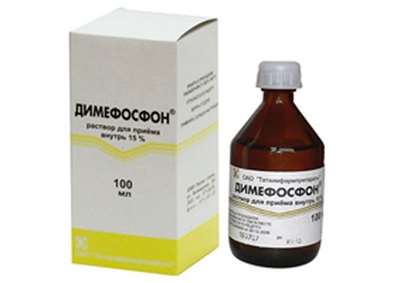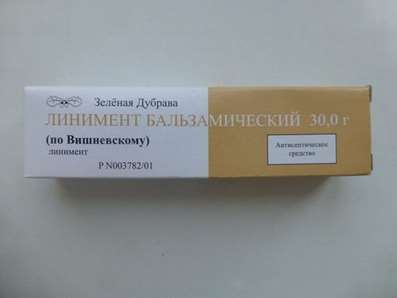Elementary chromatin fibril
01 Dec 2016
The biologist Dr. Doping tells about fixing components of living cells, molecules, and the art of freezing the nucleosome fibril.
We live in a post-genomic time. Everyone can go, sequenced its genome and obtain full information about the genes that are found in his cell. One cell contained 46 human chromosomes, and the total length of the DNA molecules (each chromosome contains a DNA molecule) of about two meters. In fact, it is a very long, thin molecule. Two meters of DNA in each cell nucleus packaged in tiny. The size of the nucleus of about 10 microns. It is believed that the compaction of DNA in a cell - is about 10 000 times, that is quite a fantastic way molecule compactisized. The paradox is that if you read the genome is not particularly difficult, we still do not understand how this gene compactisized in the cell. This problem, which has been studied for more than a century for sure, it is very far from being solved. Periodically stories happen when you have to radically change our understanding of how the process of DNA compaction in the composition of the cell nucleus or in mitotic chromosomes.
The basic principle of the compaction of DNA molecules, presumably associated with the formation of consistent increasingly thick fibrils. Molecule compactisized first into fine fibrils, and then this thin fibril compactisized more thick, that even thicker, and at some point it turns mitotic chromosome. Until recently, it seemed that these levels are described more or less. The first level of compaction of the DNA molecule is related to its interaction with so-called histone proteins. There are two main groups of histone proteins. Core histones - this histones H2A, H2B, H3 and H4, two molecules of each of these histones form a protein structure which is shaped like a hockey puck. And the hockey puck wound DNA molecule. The DNA molecule, the thin-thin,2-nanometers makes 1,7 turnover around this washer goes on the linker site is then the next washer and so on. This structure can be seen in an electron microscope, it was called "beads on a string", and a thickness of about 10 nanometers fibrils. It was believed for a very long time, the first level of compaction of the DNA molecule.
Vitamin B12 Cyanocobalamin injection - is essential for DNA synthesis.
Interestingly, in the beginning of the study, when there was electron microscopy (and without it is impossible to study the DNA compaction), it was assumed that this is the main, the main and the only fibril, from which then somehow formed chromosome. It was connected with the method of study. The electron microscope is not possible to watch living cells. Electrons can not fly through thick objects, because the object has to be very thin. Therefore, you can watch only dead specimens. How to make a sample of the dead, it depends on the state of the experimental technique. Naturally, it is necessary that all the ingredients were in place and the structure of the most retained the features peculiar to it in a living cell. For this purpose, a variety of liquids which are poured on the cage, they kill the cell and, ideally, all components are fixed state where it was in the living cell - this fixation procedure.
One of the first good clamps that have been used in electron microscopy, was osmium tetroxide. It is well captures lipids and binds very poorly nucleic acids, proteins, so it is seen in the cells 10-nanometer fibril. Then came the more successful aldehyde clamps, which are able to interact with proteins already. They actually sutured all internal cell space in such a network, linking the proteins, which are next to each other. And these locks more than successful. And when the clips were used aldehyde, it turned out that no 10-nanometer fibrils can not be found in the nucleus of chromosomes, and found a thicker fibrils, which called chromatin elementary fibrils. Its thickness is about 25-30 nanometers. And for decades it was believed that this is the fibril is the basic building block of DNA compaction.
When using aldehydes or something else to fix, it is chemical fixation, the cell - all understand it - can be a variety of changes, and the amount of incorrect information is sufficiently large. It so happens that at the time of fixation of some proteins change their location or even extracted, leaving the cells. Now there is a technique of intravital observations, and can be compared to that in the living cell, and that after fixation. Fixation leads to numerous artifacts. Therefore, always want to find a way to explore more natively chromatin structure, including in electron microscopy. But electron microscopy to be?
See the whole cell can not be accurately vivo. The cage should be cut very, very thin slices - 30, 50, 70, 100 nanometers, but thicker, or electrons are not strikes. However, the technology that has allowed more or less natively viewed in an electron microscope at a cell has been developed. And it is already linked with no chemical fixatives and physical fixation, namely freezing. In theory, the cell - is a water bubble, in which different molecules are floating, and if you freeze it, it will probably be all right. The problem is well known: during the freezing, ice crystals are formed, which are destroyed (biomolecules in general are very tender) in the extreme. But we can not just freeze and transfer the water in vitrified state. If freezing at very high speed, ice crystals do not have time to form, liquid water is actually just stabilized. The molecules diffuse stop with great speed, the whole structure is stabilized, and it is actually hard, but the water there is no crystal. The problem was it to move water in such a state.
The easiest way to translate in such a state - to take a very, very small droplets and rapidly cool them. And if this is done, it is that maintains its native structure in the droplet. If you look at a sample of a vitrified state, it is hoped that we will see how to actually look certain organelles, structure of the DNA molecule compactisized - anything. Make it quite difficult, the technology has evolved a very long time. The easiest way, which is used now very actively to explore the different protein molecules, complexes, viruses, ribosomes, due to the fact that the sample solution, which contains the macromolecular complexes, with incredible speed is lowered into the liquid tan. The temperature is low, and very quickly is frozen.
But in the case of cells, at least with animal cells, this method works is much worse. Still, they are great for such an approach. But the technology developed, and methods have been proposed, which has allowed to freeze large cells, for example human cells. One approach is as follows: the sample is cooled at the same time very fast and gets into the high pressure zone. High pressure during freezing (as is known, when freezing water expands slightly, and ice density less than the density of water) does not increase the volume, and as a result, the water does not crystallize, and is stored in a vitrified state. In words, it's very simple, but in fact and complex instrument, and to work on it hard and get good results on it - it's an art still art.
If that's so frozen, the sample becomes vitrified state, that is, there was a physical lock. Large samples are frozen as possible, but microscopic bits of tissue, even tissue, not to mention the individual cells possible. Then the ice can be, because it frozen, finely-chopped finely. Naturally, it is also special devices, which are able to produce cutting frozen. Further frozen sections can be transferred to electron microscope (model must be constantly cooled by liquid nitrogen) and then it can be viewed with an electron microscope virtually in their native state. About how natively this state are, of course, discussions. In theory, if we were so frozen cells, and then thawed it very well without the formation of ice crystals, then perhaps it would be even revived and continued to live, to synthesize different substances, and so on. But, unfortunately, it does not work, however it is hoped that it is a native state. And when such cuts looked and studied interphase nuclei, where the chromatin compactisized variously compactisized chromatin strongly compactisized, and have diffuse chromatin, which is the active RNA synthesis, and in it the level of compaction below - and also looked on mitotic chromosomes where the entire chromatin compactisized, the surprising thing was that neither in those of any other samples elementary chromatin fibril is not found. It was not simple. Nucleosomes are clearly visible, and the 30-nanometer elemental chromatin fibrils not.
The situation has turned out exactly the opposite compared to what it was in the early stages of studying chromosome compaction. Then the first thought that there nucleosome 10-nanometer fibril, nothing else. Then it turned out that this is not the case, people have argued, discussed, written articles. They came to the conclusion that, most likely, just nucleosome fibrils, but there is basic chromatin fibrils. And here it turns out that it is necessary to go back to that basic chromatin fibrils - an artifact, they are not, and there is a fine fibril nucleosome.
It's quite frustrating for those people who believed all my life that there are two levels of compaction, and it turned out that one of them is not. Moreover, it turned out that now it is possible for the individual to monitor in vivo nucleosome. It was found that nucleosomes within the unstable nucleus, they diffuse a little move. Then there was an idea, why do not we see this elementary chromatin fibrils. Elementary chromatin fibrils if they were located close to each other. Nucleosomes are moving, and how they would be able to penetrate into each other. And the absence of chromatin elementary fibrils, albeit indirectly suggests that the interaction of histone proteins occurs not only in nucleosomes, but also, for example, between the individual fibrils. It is, in principle, a well-known fact, this is the case. And, moreover, it is very actively developing direction when trying to simulate computer chromatin compaction. This is a fairly complex process requires the use of a supercomputer. Still unable to calculate in the computer, as it should compactisized DNA molecule.
On the one hand, yes, a rejection of the old, the other - new opportunities. This is a dynamic structure in which fibrils individual molecules may actually penetrate each other. It is therefore, due to the fact that they penetrate into each other and lie at a distance from each other, we can not see them. If this distance was, we would have seen them. They lie side by side, able to penetrate the individual nucleosomes fibrils from one another, and the individual fibrils are not formed, and a common molten solution nucleosome fibrils. Where did come from elementary chromatin fibrils, they've seen for many decades? Here, everything was very simple: if you hold a normal aldehyde fixation, and then learn it in a frozen state, then the 30-nanometer elemental chromatin fibril is visible. This is an artifact of fixation. Due to the fact that when clamped fibril fixing it visible. And if it is not curled, then we would have seen a single field of molten molecules compactisized using DNA histone proteins.

 Cart
Cart





